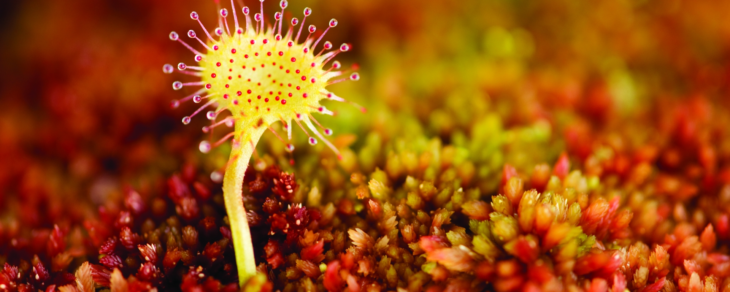Tackling the nature emergency
Globally, there is consensus that nature is in crisis. The Scottish Government and its agencies have publicly highlighted this crisis in Scotland in a range of recent policy documents and statements. The most recent of these is the Consultation on Scotland’s Strategic Biodiversity Framework which closed for comments yesterday (the 14th of December). You can read our full response here.
What was the Scottish Government asking?
This important and wide-ranging biodiversity consultation covered:
- The Scottish Biodiversity Strategy and its five-year Delivery Plans
- Provisions under the Natural Environment Bill for legally binding nature targets (like the ones we have for net-zero on climate change)
- Delivery Plans for “30 by 30” and Nature Networks
- Amendments to the aims, purpose, powers and functions of National Parks
The Scottish Wildlife Trust believes that all the measures under consultation, if supported by a suitable enabling framework, could help to tackle our dual nature and climate crises – something that the evidence shows us we have so far failed to do.

The good
We think that the ambition shown in this document marks a change in the standing and prominence that the Government is placing on nature and the importance of tackling the nature and climate crisis holistically. We want to strongly encourage the Government to keep this high level of ambition and see it through to delivery.
The overall targets set out in the Natural Environment Bill and Biodiversity Strategy are to reverse the decline in nature by 2030 and restore it by 2045. There will undoubtedly be attempts to weaken this ambition from various quarters, the Government must stand firm. Our society and economy are utterly dependant on a healthy natural environment and the health of that environment is dependent on the decisions that the current Government makes, and they must act in the interests of future generations.
The Trust thinks that legally binding nature targets are necessary to put nature and climate on the same “footing” in the eyes of Civil Servants, Government Ministers and business. The proposals for the targets within the Natural Environment Bill are welcome.
Within the Biodiversity Strategy Delivery plan there are lots of outline actions and ambitions that are sensible and to be welcomed. We think that in particular the actions around deer are to be applauded because they are specific and come with defined timelines for delivery.
Additionally, we welcome the commitment to “Identify and facilitate partnership projects for six large scale landscape restoration areas with significant woodland components by 2025 and establish management structures with restoration work progressing by 2030”. There are significant opportunities for many parts of Scotland to be involved but we feel that the Coigach & Assynt Living Landscape (CALL) area, which extends to over 60000 Ha, would be particularly suitable. A proposal for collaborative, evidence-based enhanced deer management – with the objective of enabling woodland regeneration – is already underway but greater support and focus would open up many more possibilities.

The not so good
Whilst the ambition is high, we really need to be seeing far greater follow through in the biodiversity strategy delivery plans. When we look at the totality of the actions proposed we don’t think they “add up” to the 2030 target to reverse declines in biodiversity. We would like to see all actions passing the SMART test i.e. make them Specific, Measurable, Attainable, Time-based and Realistic.
We need to see a greater commitment to habitat and species recovery, we can’t simply protect our last remaining scraps of habitat we need to expand it. The Government need to be far more specific about what they are going to do in this area.
Aligning the ambition and the proposed actions will be critical to success. As will providing an enabling framework of sufficient funding, prioritisation and monitoring.
Feedback from the public
The consultation document was a weighty tomb, coming in at around a hundred pages, with numerous detailed questions. Even in terms of spare time to respond to this document this is a “big ask” for members of the public.
To try and help members of the public response we highlighted key questions and provided briefing via an on-line portal (now closed) that allowed members of the public to feed in their key thoughts to Government. This is the first time we’ve done something like this, and the feedback has been positive.
I am very interested in the key things that members of the public are relaying to Government and one way to get a flavour is to generate a “word cloud” which highlights the most popular word used in responses. Consistently throughout the answers submitted that came up consistently were “actions”, “need action” and “delivery”. There’s a clear message coming from the people that took part in the in the online portal we ran that it’s not sufficient to be “talking the talk” on nature we must start “walking the walk” with delivery.
The Future
We don’t have long until 2030 and we need to move quickly to implement this Biodiversity Framework and reverse our declines in nature, the Government must align policy across departments to help deliver this. Just yesterday there was news in the press regarding a reported 15% budget cut to Nature Scot, this is exactly the kind of retrograde step which makes people believe the Government high level ambition is anything other than rhetoric.
Finally, I want to highlight to the Scottish Government and MSPs from all parties that investing in nature offers huge opportunities, and that strong, legally binding nature targets will encourage private sector investment in more environmentally friendly practices. Green jobs will be created in a huge range of fields from finance to engineering and from agriculture to education. They will also ensure a healthy, vibrant and habitable Scotland where people want to live, work and play.
Bruce Wilson, Scottish Wildlife Trust, Head of Policy and Advocacy
Help protect Scotland’s wildlife
Our work to save Scotland’s wildlife is made possible thanks to the generosity of our members and supporters.
Join today from just £3 a month to help protect the species you love.
Preface
Globally, there is consensus that nature is in crisis. The Scottish Government and its agencies have publicly highlighted this crisis in Scotland in a range of recent policy documents and …
